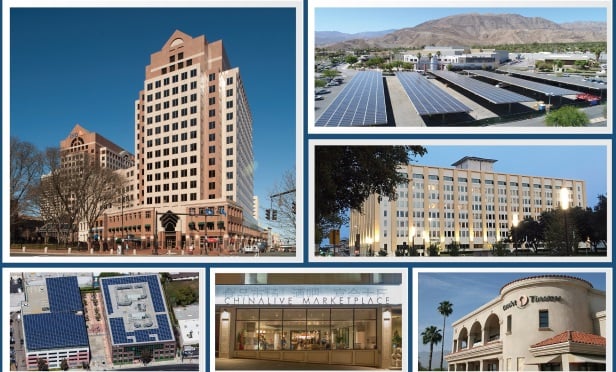California's commercial building energy disclosure law, AB 1103, will go into effect July 1, 2013.
The law requires commercial building owners to disclose a building's historical energy usage prior to selling, leasing, or financing the asset. This will turn into one more third party report a commercial building owner needs to get a deal done. If done well, buyers will gain a better understanding of the building that they are buying. Perhaps market forces will reward more energy efficient buildings.
Governor Arnold Schwarzenegger signed AB 1103 into law in 2007 and the implementation of the law has been postponed several times. The California Energy Commission postponed implementation to consider a host of concerns from the real estate industry. Now, in 2013, the law affects a commercial real estate finance industry that is becoming increasingly regulated. The key element to the law is getting the data efficiently from the utility companies and the California Energy Commission has worked with the utilities to make this process easy and automated.
Compliance is simple and inexpensive. The key element of energy disclosure is the capture of the data from utility companies. Third party providers like Partner Energy can assist in the process. The requirement can be fulfilled in essentially three ways:
- Full-Service Energy Disclosure Report: For between $500 and $1,000 an engineer can visit the site, take measurements, collect utility data and provide a rather accurate Full-Service Energy Disclosure Report.
- Audited Energy Disclosure Report: A client wanting to minimize costs can provide some building specific data online, then Partner Energy will obtain and review the energy data from the utility company and provide an Audited Energy Disclosure Report.
- Reviewed Energy Disclosure Report: A client that is already managing their energy usage in EPA ENERGY STAR Portfolio Manager System, can generate an energy efficiency rating for the building through the system and have it certified by a licensed professional engineer if they apply for the ENERGY STAR label.
Implementation of this energy disclosure law is tiered based on building size. As of today, the implementation schedule is as follows:
- On and after July 1, 2013, for a building with total gross floor area measuring more than 50,000 square feet.
- On and after January 1, 2014, for a building with a total gross floor area measuring more than 10,000 square feet and up to 50,000 square feet
- On and after July 1, 2014, for a building with a total gross floor area measuring at least 5,000 square feet and up to 10,000 square feet.
There is no specific financial penalty for non-compliance. However, a buyer of an inefficient real estate asset could be damaged by the seller's failure to comply with the disclosure laws and may seek compensation from the seller and/or broker after the transaction closes. I expect that brokers will insist on their clients complying with this law as they do with other disclosure laws.
Want to learn more? Partner Energy is offering an energy disclosure webinar on August 20th. Click here to learn more about how to comply with AB 1103.
Also, note that some cities have their own laws on energy disclosure—San Francisco, New York, Austin, and Washington D.C. Information about the nation's patchwork of energy disclosure laws can be found at www.energydisclosure.com. San Francisco's law, the Existing Commercial Buildings Energy Performance Ordinance, is generally more demanding than AB 1103 as it requires the owner to provide a full energy audit to the city every 5 years. A building owner complying with San Francisco's Energy Performance Ordinance can click here to learn more about energy audits.
The commercial real estate profession's view regarding new laws and ordinances is often: this is unwanted regulation that will cost money. True, however, there are opportunities to save energy. These reports are super inexpensive relative to the cost of other due diligence reports, and more importantly relative to the return on investment of taking steps to reduce your building's energy consumption.
Want to continue reading?
Become a Free ALM Digital Reader.
Once you are an ALM Digital Member, you’ll receive:
- Breaking commercial real estate news and analysis, on-site and via our newsletters and custom alerts
- Educational webcasts, white papers, and ebooks from industry thought leaders
- Critical coverage of the property casualty insurance and financial advisory markets on our other ALM sites, PropertyCasualty360 and ThinkAdvisor
Already have an account? Sign In Now
*May exclude premium content© 2025 ALM Global, LLC, All Rights Reserved. Request academic re-use from www.copyright.com. All other uses, submit a request to [email protected]. For more information visit Asset & Logo Licensing.








